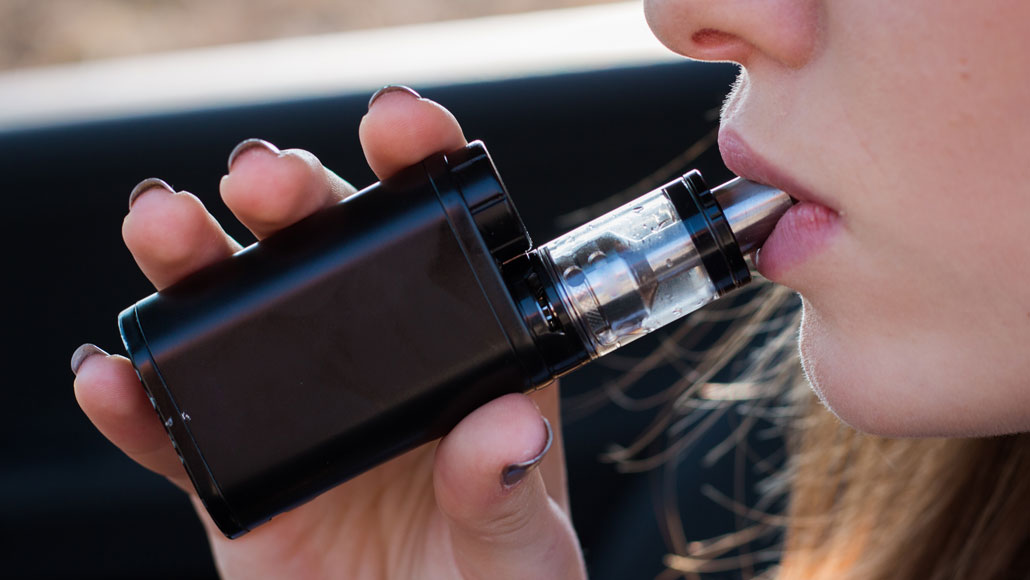Vaping may have sent 153 people to hospitals with severe lung injuries
The CDC says it is looking into the cases, most of which involve adolescents and young adults

The use of e-cigarettes is the common denominator among 153 cases of severe lung injury, primarily in adolescents and young adults, reported by 16 U.S. states since June 28.
sestovic/iStock/Getty Images Plus
- More than 2 years ago
Just days after announcing an investigation into links between vaping and severe lung disease, the U.S. Centers for Disease Control and Prevention said that there are now 153 suspected cases across the country — most involving adolescents and young adults.
The recent rise of vaping among adolescents has sparked alarm among health professionals, who have raised concerns about health and addiction risks and called out e-cigarette companies for promoting the products to youth. On August 21, the CDC confirmed that it was helping state health officials look into the cases, reported since June 28 across 16 U.S. states. The cases have not yet been tied to a specific type of product or vaping liquid.
Studies have shown numerous health harms from vaping. But because vaping technology was introduced only about a decade ago in the United States, the long-term health effects are still unclear. Here is some of what we about how vaping impacts the lungs and how e-cigarettes have become more popular among U.S. teens.
Vaping can harm lungs
All of the 153 patients under investigation had used e-cigarettes before experiencing symptoms including shortness of breath and chest pain. Their lung illnesses became so severe that the patients eventually had to be hospitalized.
This development is not entirely surprising, given evidence from studies showing that e-cig use can lead to chronic respiratory symptoms and more severe asthma in teenagers (SN Online: 8/2/19). When an e-cigarette heats chemicals including nicotine, flavor compounds and solvents (SN: 8/20/16, p. 12), it creates a toxic stew that can impair lung function, researchers say. Flavor compounds, though approved for consumption, have not been tested for safety when inhaled.
Many of the 153 patients also reported recent vaping of tetrahydrocannabinol, or THC, the psychoactive ingredient in marijuana. Less research has been done on the impact of vaping marijuana on the lungs, though the American Lung Association suspects that it may produce respiratory health effects similar to what has been seen with typical e-cigarette use.
Sign up for our newsletter
We summarize the week's scientific breakthroughs every Thursday.
Vaping is increasingly popular among youths
Last year, 1 in 5 high schoolers reported recent e-cig use — a 78 percent jump over the previous year, according to the National Youth Tobacco Survey (SN: 12/22/18, p. 28). That startling rise prompted the U.S. Food and Drug Administration to restrict the sale of certain flavors that appeal to young people (SN Online: 11/16/18).
The popularity of e-cigarettes has put a new generation of teenagers at risk of nicotine addiction, researchers say, many of whom may never have tried traditional cigarettes in the first place. Nicotine harms brain development, which is ongoing until about the age of 25.
As for using marijuana products in e-cigarettes, the most recent data are from 2016, when more than 2 million middle school and high school students — or about 1 in 11 — reported vaping marijuana (SN Online: 9/17/18). With THC, researchers are particularly concerned about the potency, as the concentration of this substance in vaporized oils and waxes can be up to 30 times as high as in dried marijuana. This could also put young users at risk of addiction.
E-cigarette companies use ads that appeal to youth
While traditional cigarette companies aren’t allowed to tailor advertisements and products toward luring kids, that hasn’t been the case for e-cigarette companies. The celebrities, cartoon characters and sweet flavors in vaping ads have played a part in stoking popularity among youth (SN Online: 3/27/18).
In a study of nearly 7,000 adolescents who had never used a tobacco product, those who had remembered seeing or liking an e-cigarette ad were 1.6 times as likely to be interested in trying vaping or to actually vape compared with kids who didn’t recall the ads.







